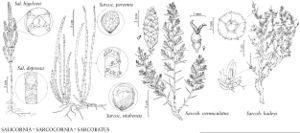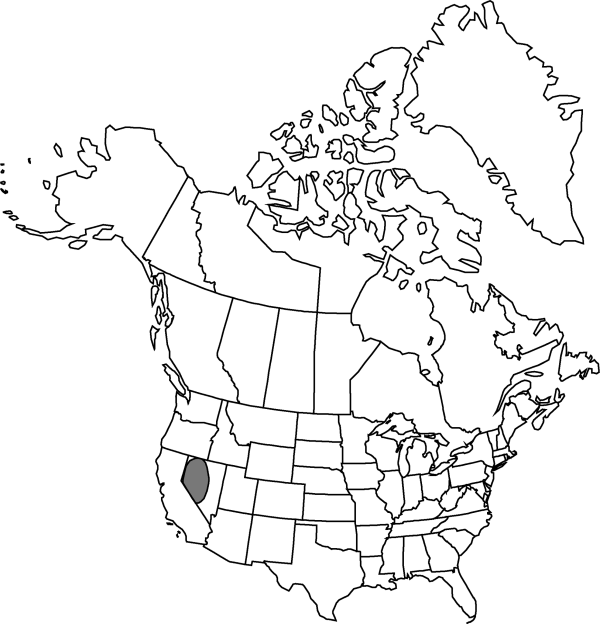Sarcobatus baileyi
Proc. Biol. Soc. Wash. 7: 77. 1892.
Plants sometimes red-tinged, intricately branched, evenly rounded, to 0.7–1 m, low; proximal branches in contact with ground, forming mat. Leaves mostly clustered on cushionlike base on older wood; blade dull green to grayish green, usually terete and arcuate, 0.5–1 (–1.6) cm, pubescent. Inflorescences: pistillate flowers and staminate spikes on shortened branches with 1–3 barely discernible internodes; staminate spikes usually to 10 mm. Fruits (2–) 6–12 mm; wing (0.8–) 1–2 cm diam. Seeds 2 mm. 2n = 108.
Phenology: Flowering spring; fruiting summer.
Habitat: Alkaline soils in semiarid or arid plains, flats, or slopes, mixed shrublands
Elevation: 1200-1900 m
Discussion
So far as is known, Sarcobatus baileyi is endemic to Nevada, centering in the Lahontan Basin. It is often in monotypic stands or with Atriplex confertifolia or Sarcobatus vermiculatus. It should be sought in adjacent California. Bailey greasewood is allegedly a nonphreatophyte.
Selected References
None.
Lower Taxa
"shortened" is not a number.

